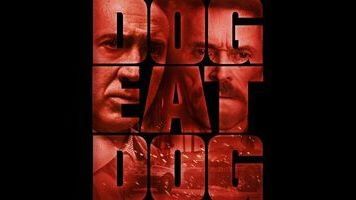Schrader, coming off the behind-the-scenes troubles of Dying Of The Light (also starring Cage), makes a disregard for tone, consistency, and taste the dominant force of the movie. One scene is in black-and-white for no reason; another is pumped full of enough backlit fog to fill three hours of ’80s MTV; others look like they came from the floor of the Natural Born Killers cutting room. As the writer of Taxi Driver and Raging Bull and the director of the likes of Blue Collar, Light Sleeper, and Mishima: A Life In Four Chapters, Schrader has made a career of mainlining dark and self-destructive drives. But here, his direction is a randomized variable, sometimes leaden, sometimes inspired, never cogent. In its perverted methods, it pays tribute to Bunker’s eternal theme of crime as a vicious cycle. Dog Eat Dog is an indiscriminate collage of the different ways one might stylize a crime movie, and its characters seem aware that they are in a type of crime story that’s been told before. But still they go through with it.
After being reminded that the clichéd one last score never gets pulled off successfully, Mad Dog responds, with naïve authority, “I think it does sometimes. You just never ever hear about it ’cause they run off to Hawaii, and you never hear from them again.” The character, a violent dimwit who murders a woman and child in the opening scene (which is, bizarrely, partly an homage to Hype Williams’ Belly), embodies Dog Eat Dog’s grotesque conception of criminality as addiction; in one squirmy, hilarious sequence, he talks Diesel into helping him dispose of a body in the language of self-actualization and therapy, believing that dumping the corpse in a spot he used for a previous murder will bring needed closure to a phase of his life. As with gambling or hard drugs, there’s an element of chic that the addict can cling to for comfort: the casino, the rock-star lifestyle, hard-boiled swagger.
Like Michel Poiccard, the hood played by Jean-Paul Belmondo in Breathless, Troy likens himself to Humphrey Bogart. As the stupid mistakes and bodies pile on, the putative brains of the operation retreats further into fantasy, until Cage starts reading all of his dialogue in a Bogart impression. But by then, the movie has crossed several layers of self-awareness, tried on more looks than it can count, and completely forgotten about that kidnapped baby.
















![HBO teases new Euphoria, Larry David, and much more in 2026 sizzle reel [Updated]](https://img.pastemagazine.com/wp-content/avuploads/2025/12/12100344/MixCollage-12-Dec-2025-09-56-AM-9137.jpg)
























